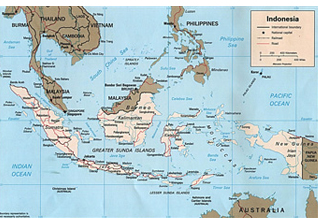HOUSE VISON in ASIA
 Although I noted that we are eager for exporting the “Japan-style” house to Asian countries which will become the international economic focus, it is not that simple ‘exporting’ issues as housing culture can not be separated from their traditions and habits, and even the climate and endemicity. That is to say, the house culture is subject to one’s daily life and the “pride” in national culture. I suppose that the complexity of globalization in economy should either be attributed to such national “pride”. The will of devoting ones’ life and energy to their native land inspires people to build their homeland and make their life energetic and passionate. So, actually, I sometimes feel sassy to introducing “Japan-style” house to other Asian countries.
Although I noted that we are eager for exporting the “Japan-style” house to Asian countries which will become the international economic focus, it is not that simple ‘exporting’ issues as housing culture can not be separated from their traditions and habits, and even the climate and endemicity. That is to say, the house culture is subject to one’s daily life and the “pride” in national culture. I suppose that the complexity of globalization in economy should either be attributed to such national “pride”. The will of devoting ones’ life and energy to their native land inspires people to build their homeland and make their life energetic and passionate. So, actually, I sometimes feel sassy to introducing “Japan-style” house to other Asian countries.
So, what we need to do is sharing the ideas for our coming Asian era as well as comprehensively explaining how Japanese inherit and develop the “house conception” rooted in Japanese culture based on the situation of Japan (that is, Japan could not find the way out and develop without the westernization in Meiji Era) and aesthetic consciousness on life due to age-long accumulation. Only after achieving consensus, can we discuss the “Asian Life” and exchange opinions on the potentiality and opportunity of “House Vision in Asian”.
I came to know this through discussing with Mr. Makoto Muramatsu, an expert of Asian cultures from Institute of Industrial Science, the University of Tokyo (IIS), who has been committed himself for the opportunity of Asian cities. He suggested that the notion of ‘exporting’ the “Japan-style house” to other Asian country might not be supported easily and gave some advice on how to share our visions.
Vast territory is the characteristic of Asia. But Japanese people often focus on China and their growing economy by mentioning ‘pressure’ from our neighborhood. However, we also need to see other countries such as Indonesia, Thailand, India, Taiwan and so on. Be similar to the United States, Indonesia is vast in territory across board latitudes. However, it is an island county consisting of 18,000 small and dispersed islands. The lands connect cities like a bridge. It’s worthy of note that Indonesia has great potential due to its rich nature resource in many islands, including Kalimantan Island and Sumatra, on which there is virgin tropical rainforest. In fact, Jakarta, capital of Indonesia, has been developing dramatically since Edo era. The population of Jakarta is only less than that of Tokyo which ranks the first in the world.
It is commonly said that the population of India is about to exceed that of China. Besides, India has paid more attention to talents in high-tech industry. So India is a country with great potential. And Indian people and Japanese people have the common habits of taking off shoes at the entrance of house.
It would be a great opportunity if we could share our cultural resources and discussion on the style of our houses with people from other Asian countries.
Through the discussion with Mr. Muramatsu, our ‘House Vision’ has successfully proceeded into the second step, that is, ‘House Vision in Asia’. It is of great significance to the housing industry.
We have spent quite a long time in learning the way of architecture based on the structure and mechanism of the modern society from the Western countries. Of course, it is not easy to challenge or even exceed the western technologies. However, we can gradually enrich our design concept with what we learned from the Occident and clarify our mind, which, I believe, could lead to a steady motivation.

